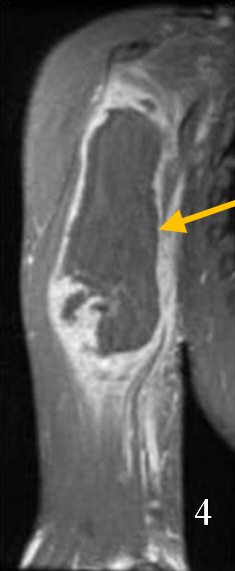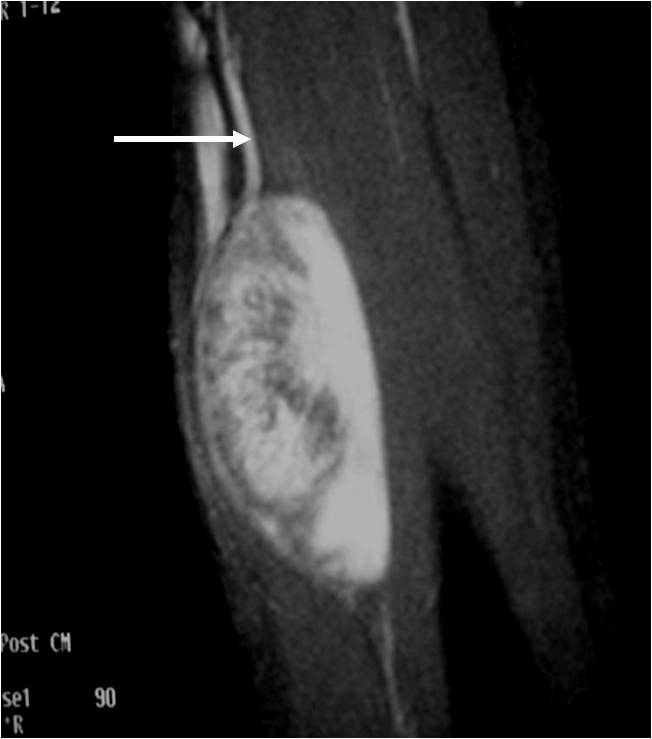What is an Angiosarcoma?
An angiosarcoma is an extremely rare cancerous tumor that arises from the endothelial cells of blood vessels. It is usually diagnosed after the disease has already spread.
Signs and Symptoms
- • Signs and symptoms include include a blue-red skin lesion and a rapidly growing painless mass.
- • A raised area of skin that looks like a bruise, a bruise-like lesion that grows larger over time, a lesion that may bleed when scratched or bumped.
Causes
- • Swelling caused by a backup of lymph fluid, called lymphedema.
- • Past radiation therapy.
- • Exposure to some cancer-causing chemicals.
Who is usually affected?
- • No predilection for sex or race.
- • Occurs most often in elderly individuals, breast cancer patients with chronic lymphedema and radiation.
Common Areas Involved
- • Forms in the lining of the blood vessels and lymph vessels.
- • Most often occurs in the skin of the head and neck.
- • Can occur in skin, breast, liver and spleen.
Biological Behavior
- • Biological behavior is that it is a very aggressive tumor, often preceded by lymphedema and radiation. Tumors can get large exceeding 5 cm.
- • High death rate. If the tumor is larger than 5 cm, the 5 year survival rate is 5-15%.
- Likely to metastasize. It can metastasize to the skin and soft tissue, lungs, lymph nodes, liver and bones.
Diagnosis
- • The work-up often consists of a physical examination, X-rays, CT scans, MRI, and sometimes bone scans are required. CT scans can be used to check for subtle mineralization that may help with the diagnosis
- • CT of the chest is necessary to check for pulmonary metastases. The lungs and other bones are the to most common sites for the tumor to spread.
- • The diagnosis is often confirmed with a biopsy, which means taking a sample of tumor and having it analyzed under a microscope by a pathologist.
Risk to your limbs
Angiosarcomas are cancerous aggressive tumors that, if left unchecked, will grow and destroy your normal bone. Clinically, local pain and swelling may be the first sign. As the tumor slowly grows, the bone is weakened and you are at an increased risk of breaking the bone due to the tumor, called a pathological fracture. They may also spread to your lungs or other bones.
Radiographic imaging is used to help form a diagnosis. These include X-Ray, MRI, CT and Bone Scans.
An example of an MRI is shown.

Treatment of Angiosarcoma
Treatment includes wide and deep excision, radiation and chemotherapy.
Surgery
Most common treatment is wide radical limb sparing surgery. Surgical treatment includes wide or radical resections to remove the complete tumor and additional margins. The removal of additional, surrounding margins ensures that the tumor is completely removed and decreases the chances of the tumor coming back.
Chemotherapy
Chemotherapy is a systemic treatment option for some cancers, meaning the chemotherapy drugs travel throughout the body and can kill the cancerous cells that have metastasized, or spread throughout. Chemotherapy is used to treat cancer, control/prevent cancer from spreading, and ease the symptoms related to the cancer. There are various drugs used in chemotherapy, so the combinations of drugs administered and the number of cycles may differ between each person and tumor. Lastly, chemotherapy may be used in conjunction with other treatments, specifically local treatments such as surgery.
Radiation
Radiation is a treatment option for some cancers. Radiation therapy is a localized treatment that utilizes high-energy particles or waves to kill cancerous cells. Because radiation therapy is a localized treatment, it only affects the area in which it is set to target and therefore eliminates the risks of damaging healthy cells throughout the body. Not only is it used to treat cancer, but it can also decrease the chances of the cancer from recurring. Lastly, radiation may be used in conjunction with other treatments, such as surgery or chemotherapy, to treat cancers.






